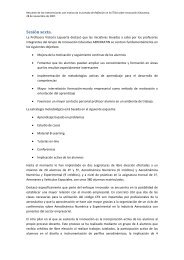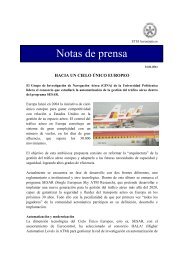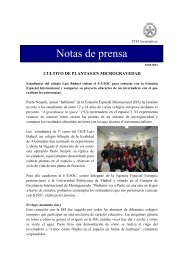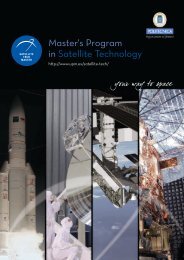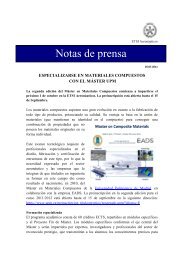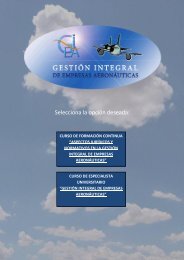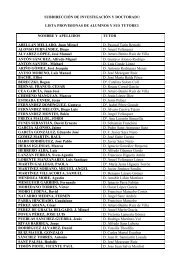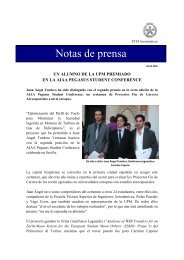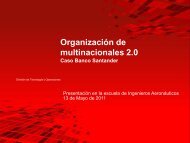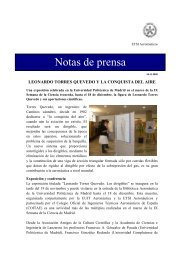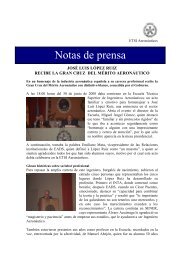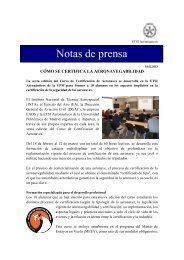Flightpath 2050 - European Commission - Europa
Flightpath 2050 - European Commission - Europa
Flightpath 2050 - European Commission - Europa
You also want an ePaper? Increase the reach of your titles
YUMPU automatically turns print PDFs into web optimized ePapers that Google loves.
industry has introduced to the world market a complete<br />
set of new products and services including a real new<br />
generation of air vehicles and ever-more efficient,<br />
environmentally friendly and quiet engines. These are<br />
leading edge and recognised as reference products by<br />
the whole aeronautics community. As a result of these<br />
efforts society in <strong>2050</strong> considers that travel by air is<br />
environmentally friendly.<br />
Europe is recognised globally for the innovative concepts<br />
realised in its products and services driven by a vibrant<br />
and successful industry and enabled by efficient policies.<br />
Strong, coherent research networks and partnerships<br />
between private and public actors drive <strong>European</strong><br />
innovation and are enabled by strong public funding<br />
and a range of globally-recognised, efficient instruments.<br />
Infrastructure<br />
The ground infrastructure is in place for all types of<br />
aviation, transport and non-transport, commercial and<br />
non-commercial. It comprises major hubs, secondary<br />
airports, vertiports and heliports, all of which are<br />
seamlessly connected within a multimodal transport<br />
system. Access to airports is facilitated by specialist<br />
vehicles. Traditional hub airports operate at high<br />
utilisation levels. Delays are mitigated by highly efficient<br />
operations and through night operations enabled by<br />
ultra-quiet aircraft. Congested airports are no longer a<br />
bottleneck due to action taken by the Single <strong>European</strong><br />
Sky, SESAR, successor programmes, connections to other<br />
ATM systems worldwide and new aircraft concepts.<br />
efficient possible fuel consumption and emissions at the<br />
lowest possible cost.<br />
Infrastructure and services, operators, aircraft, airports,<br />
ground handlers and the military are integrated into<br />
these global, interoperable networks provided by a<br />
small number of organisations. These networks are<br />
seamlessly connected to other modal networks, most<br />
notably rail, sea carriers and local and regional transport.<br />
Shared information platforms and new IT tools and<br />
services facilitate data exchange and decision making<br />
They support optimised and interconnected services,<br />
providing real-time information to professionals and the<br />
travelling public and enhancing system resilience in the<br />
event of disruption and crisis.<br />
The air transport network is able to cater for much<br />
greater traffic densities through new services based on<br />
ever higher degrees of automated flight management<br />
and control for all air vehicles. In addition to the benefits<br />
delivered to commercial air transport, precise navigation<br />
and on-board systems give all-weather, 24/7 capacity to<br />
rotorcraft and aircraft capable of door-to-door operation<br />
with limited infrastructure. All types of rotorcraft are<br />
capable of simultaneous, non-interfering approach<br />
to airports as part of regional networks including<br />
city vertiports and secondary, remote infrastructure,<br />
complying with local noise regulations. Automation has<br />
changed the roles of both the pilot and the air traffic<br />
controller. Their roles are now as strategic managers and<br />
hands-off supervisors, only intervening when necessary.<br />
Access to airports is quick, comfortable and simple for<br />
all people in Europe. Intermodal connections, especially<br />
air-rail provide a win-win situation in terms of passenger<br />
convenience and sustainability. Airport design, processes<br />
and services are based on new concepts and are highly<br />
efficient. Airport operations are resilient against weather<br />
and other disruption. Flight planning, aircraft sizes<br />
and infrastructure are optimised and where necessary<br />
increased. New operators have evolved from the general<br />
aviation market segment. Seamless door-to-door travel<br />
of passengers and freight is the norm.<br />
The Single <strong>European</strong> Sky is fully implemented and<br />
the successor programmes of SESAR and similar<br />
interoperable programmes globally have ensured that<br />
capacity meets expanding demand in the air and at<br />
airports. These developments have optimised the access<br />
and trajectories of air vehicles, ensured equity of access<br />
and safe and efficient vehicle operations with the most<br />
8<br />
Source: Eurocontrol<br />
9



